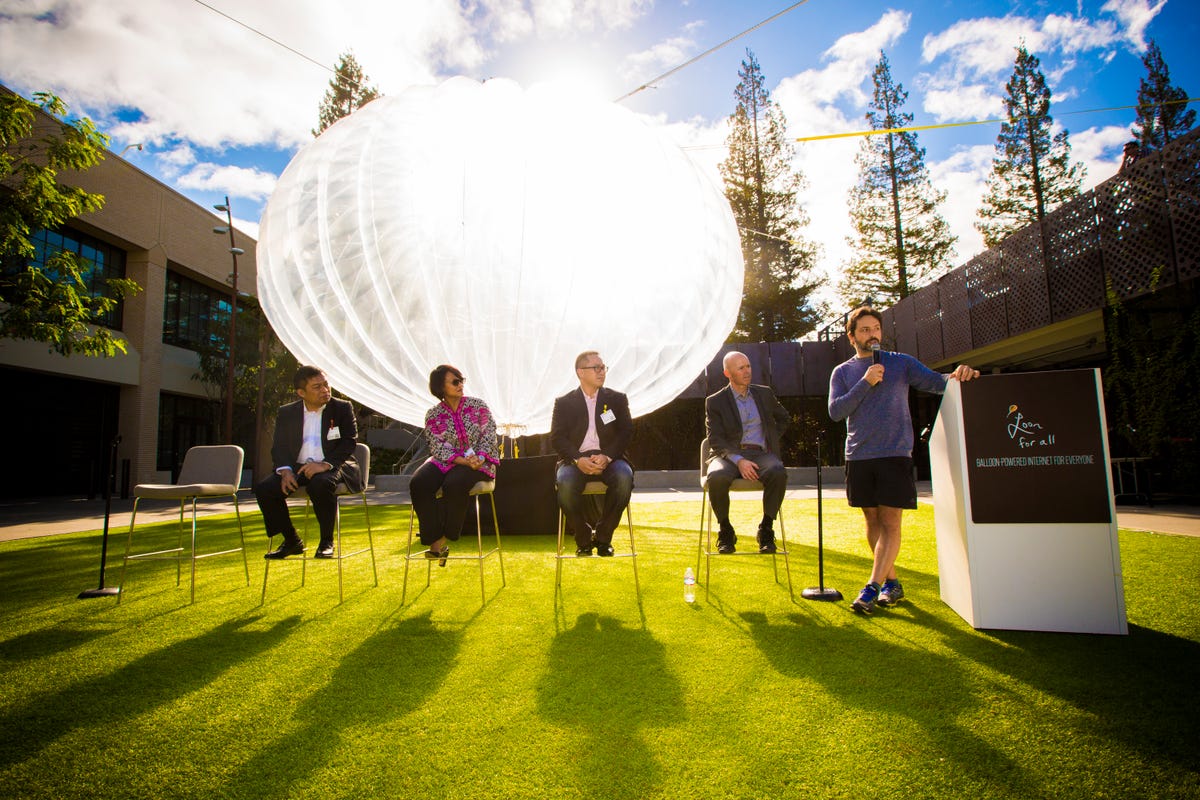MOUNTAIN VIEW, California — Alphabet’s Project Loon is one step closer to taking flight.
The project uses high-flying balloons to beam Wi-Fi access to remote areas of the globe. Alphabet, the new parent company of Google, said Wednesday it will begin testing the balloons in Indonesia.
Alphabet is signing a preliminary agreement, known as a memorandum of understanding, with three Indonesian telecommunications companies — Indosat, Telkomsel and XL Axiata — to bring the balloons to the country over the next year.
“While the physical distance between here and Indonesia is great, increasingly the emotional distance around the world is shrinking,” Sergey Brin, Google co-founder and Alphabet president, said at a press event here.
That’s because our world is connected, but we need to do more, he said. Brin stood next to a large inflated balloon on display in the courtyard of Google X offices, the secretive lab where the project was developed. The prop balloon, though, was only half the size of the actual ones that will take flight.


“While the physical distance between here and Indonesia is great, increasingly the emotional distance around the world is shrinking,” said Google co-founder and Alphabet president, Sergey Brin (right).
James Martin/CNET
Four billion people still don’t have access to the Web, according to Alphabet. Changing that could have staggering implications for emerging countries. The Internet could give rural villages video access to remote doctors and classrooms, for example. It could even help break the cycle of poverty, according to the Bill and Melinda Gates Foundation, by allowing the rural poor to send and receive money right from their phones.
Facebook has a similar goal, but wants to use drones instead of balloons. Space X CEO Elon Musk plans to launch clusters of cheap, low-flying satellites to beam the Internet around the world. Sir Richard Branson wants to build the world’s largest satellite constellation to provide high-speed Internet to the billions who still don’t have it.
By using balloons, Alphabet can skirt the need to build a network of cell towers. Instead, “the cell towers we’re building are 60,000 feet up in the sky,” said Mike Cassidy, vice president of Project Loon.
Of course, spreading the Internet to remote locations is also good for Alphabet’s business. The more people connected to the Internet, the more people are likely to use the company’s services, including Gmail, search and its YouTube video site.
The solar- and battery-powered balloons will fly in the stratosphere, 8 to 30 miles above the ground. The team handling the project began tests two years ago in New Zealand and has since expanded into Brazil and California’s Central Valley. The team has also done preliminary testing in Sri Lanka.
Now Indonesia joins that small group.
Developing flying cell towers hasn’t always gone smoothly. Astro Teller, the head of Google X, said in March he’s had to send teams by boat and helicopter to the Arctic Circle and South Pacific to collect balloons that drifted where they shouldn’t have.
Alphabet said it hasn’t set a date for a full commercial launch. The Indonesian pilot will show how much work still needs to be done.
“This testing is going to be very revealing to us about how close we are to commercial launch,” said Cassidy.




